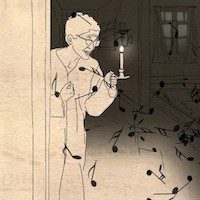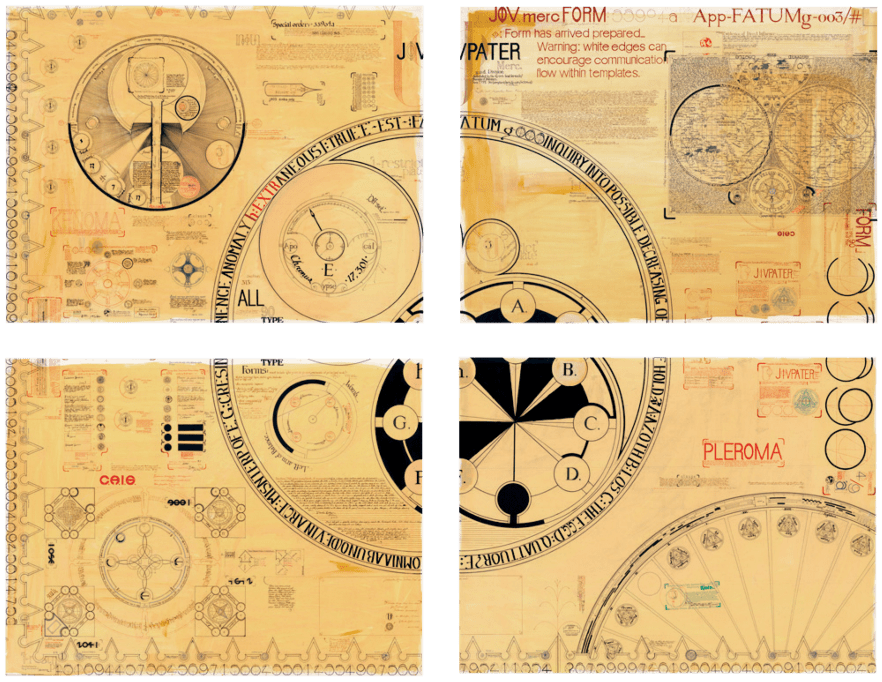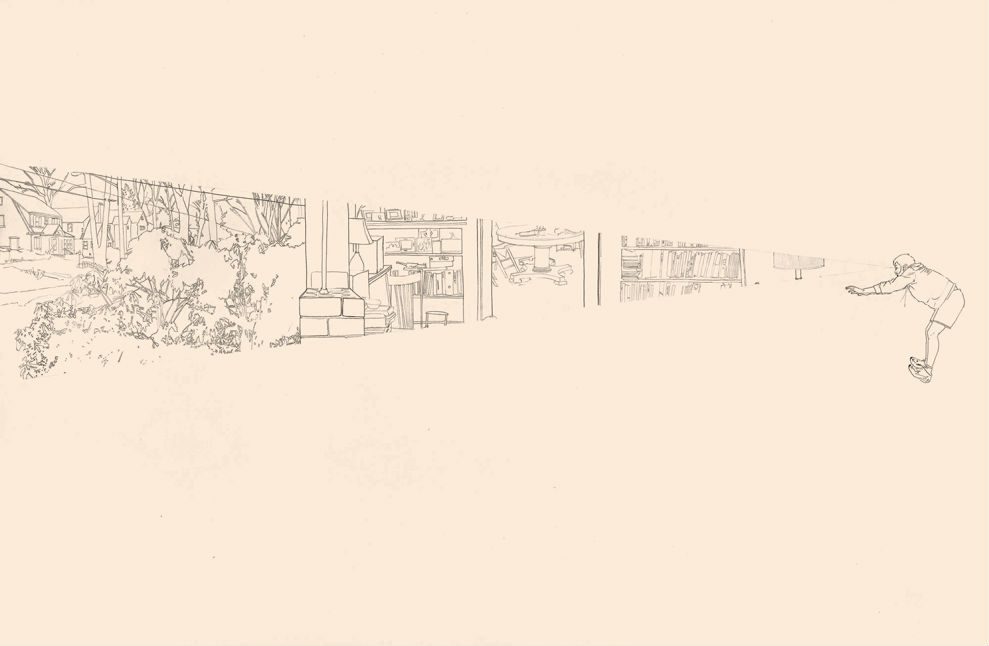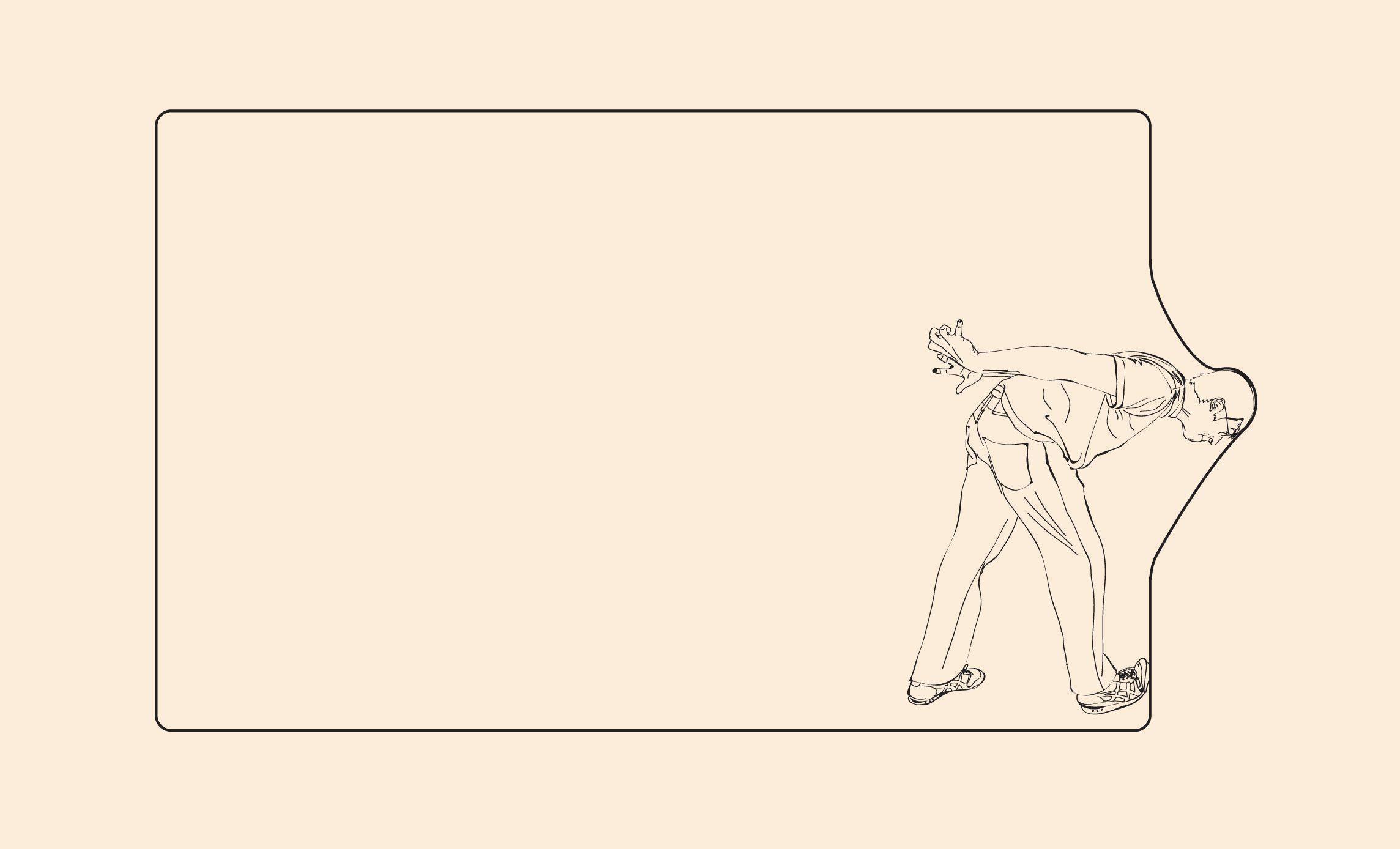The New York Comics & Picture-Story Symposium is a weekly forum for discussing the tradition and future of text/image work. Open to the public, it meets Monday nights at 7-9 p.m. EST in New York City. Presentations vary weekly and include everything from historical topics and technical demonstrations to creators presenting their work. Check out upcoming meetings here.
On Monday, July 14th, at the 91st New York Comics Symposium, the cartoonist and animator Neil Dvocak presented on his work. The symposium was held at BHQFU, and the talk began with a brief explanation of the school’s mission by the comic artist Juliacks, who is currently one of their artists in residence.
Dvorak began his talk by explaining that despite drawing from a very young age, “like a lot of cartoonists,” he came to comics relatively late in his artistic career, at age 27. His primary interest as a young artist was drawing maps, and increasingly elaborate ones at that. Dvorak showed several drawings from his childhood that displayed a preternatural gift for cartography. His interest in maps led him to create a series of oversized, elaborate, alchemy-inspired map-like charts. He “loved the aesthetic of information” and its implicit underlying narrative. The work of Albrecht Durer, William Blake, and Shel Silverstein were huge inspirations for Dvorak during this time, in particular Silverstein’s Different Dances.
Dvorak began working towards his MFA at SUNY Purchase and making sculptures, but felt frustrated. He abandoned the idea of having a pretty sketchbook and decided to write down every idea that came to him, even the “bad” ones. It was an important step in taking himself seriously as an artist. Nonetheless, he still did not feel he was telling the stories he wanted to tell. He found he was less interested in his finished pieces than in the characters he felt were embedded within them. Dvorak also felt that his work was inefficient. He spent an entire semester on one sculpture and still felt compelled to “tell the story better.” He began taking ideas out of his sketchbook and trying to turn them around in a single day.
Then, a friend lent Dvorak Charles Burns’s Black Hole, which started him reading comics in earnest. One day, while deep into a Love and Rockets comic, it occurred to him (finally) that comics would be a medium where he could fully explore and work out his ideas and thought experiments. His conceptual drawings now became full-fledged comics based on his collected, uncensored sketchbook ideas, including the piece below, entitled “Push.”
The comics turned into Easy Pieces, a semi-autobiographical web and print comic that defies simple categorization. Dvorak himself said that when forced to boil it down he describes it as “Terry Gilliam’s Brazil meets Shel Silverstein.” The comics, which are hosted on the prolific comics website ACT-I-VATE, are meant to explore the tension of what it means to be human, our communal and constant conflicts between head and heart and gut. They are a sort of semi-scientifically inspired meditation on the complexities of our emotional lives, and their effect is disarming and thought-provoking. In these comics, there are two worlds explored: one is basically our reality, the “home world” rendered in black, and the other is the invisible, but parallel, world of the “Jupiter Organization,” a mysterious big-brother type of bureaucracy whose operations and motives are often opaque.
Dvorak’s comics work eventually led into an animation collaboration with his friend Bracey Smith. The result was the very moving animated short “Ouverture,” which premiered at MoMA in 2013. Dvorak realized that animation could heighten his profile and bring his work to a much larger audience than had previously been possible from showing at comics conventions alone—though it should be noted that his convention setup is one of the most charming and eye-catching at any show, complete with a proper writing desk, an oriental rug, and a standing lamp. He was also a lead animator for The Lumineers’s official video for their song “Submarine,” which uses the technique of rotoscoping.
Ouverture from Pioneer One on Vimeo.
Dvorak’s desire to extend the reach of his work via animation led to him launching a successful Kickstarter campaign to animate Easy Pieces last September. Dvorak explained that the greatest lesson he has learned while making comics is simply to “open your mouth and just ask.” Despite his current success and immersion in animation, Dvorak said he does not want to animate forever, not just because it is beyond time consuming for one person, but because his “heart is still in comics.”
Dvorak concluded by reading two more comics from Easy Pieces and taking questions from the audience. When asked how much of himself he puts in the narrative, Dvorak answered “almost all” and that the work is almost like a diary. Dvorak said that he believes comics are particularly well-suited for autobiography, and that he intends to explore their full potential in his lifelong struggle to communicate his ideas.
***
Images List:
Image 1: Neil Dvorak, “Ocre Piece”, Mixed media on paper, 2008
Image 2: Shel Silverstein, Different Dances, 1979
Image 3: Neil Dvorak, “The Direct Result of Being Off-Balance, Every Piece Aware,” Pencil on paper, 2008
Image 4: Neil Dvorak, panel from “Push”, Easy Pieces
Image 5: Neil Dvorak, “Treatment 304”, Easy Pieces
Image 6: Neil Dvorak, excerpt from “Manual,” Easy Pieces
***
About the author: Sophia Wiedeman is a comic artist and author of The Lettuce Girl series of comics as well as the Xeric-winning graphic novel The Deformitory. She lives and draws in New York City. You can see her work at sophiadraws.com on her tumblr at sophiadraws.tumblr.com and follow her @sophiawiedeman on twitter.










